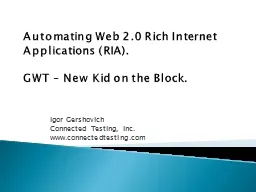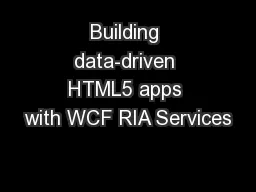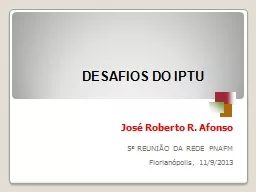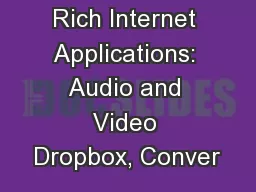PPT-Automating Web 2.0 Rich Internet Applications (RIA).
Author : trish-goza | Published Date : 2016-07-04
GWT New Kid on the Block Igor Gershovich Connected Testing Inc wwwconnectedtestingcom Often feature a rich userfriendly interface based Rich Internet Application
Presentation Embed Code
Download Presentation
Download Presentation The PPT/PDF document "Automating Web 2.0 Rich Internet Applica..." is the property of its rightful owner. Permission is granted to download and print the materials on this website for personal, non-commercial use only, and to display it on your personal computer provided you do not modify the materials and that you retain all copyright notices contained in the materials. By downloading content from our website, you accept the terms of this agreement.
Automating Web 2.0 Rich Internet Applications (RIA).: Transcript
Download Rules Of Document
"Automating Web 2.0 Rich Internet Applications (RIA)."The content belongs to its owner. You may download and print it for personal use, without modification, and keep all copyright notices. By downloading, you agree to these terms.
Related Documents














